Where is the Most Fascinating Geology in the Solar System?
Posted on Categories Discover Magazine
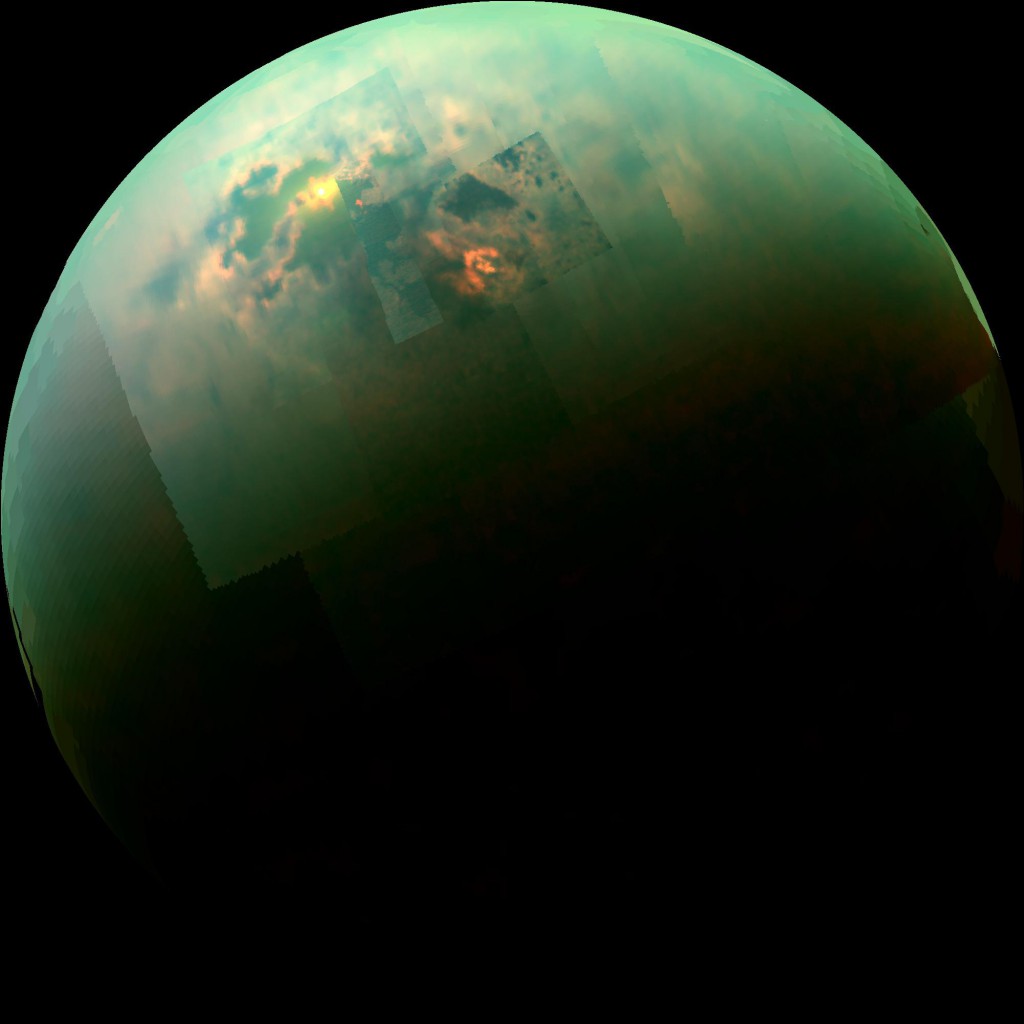
I’ve spent the last few days at the Geological Society of America Annual Meeting in Seattle. What I’ve learned is that geology has definitely left the planet and there are some great questions and locations for studying geologic problems on other planets in our solar system.
This got me thinking about some of my favorite geologic sites in the solar system. Some of them are like features on Earth, others are like terrestrial deposits on steroids and others are like nothing we can find on our home planet.
So, here is a top 10 of cool geologic features across the solar system (in no particular order). By no means is this exhaustive, but it is at least a taste of the amazing geology off the Earth.
The seas of Titan: Cassini’s visit to Saturn recently met its fiery demise, but one of the most important aspects of that mission was the Huygens lander on the giant moon Titan. There, the orbiter and lander took a close look at the remarkable methane seas on Titan. I’m fascinated with what might lurk in those seas under the thick atmosphere — is there life? The ingredients of life? It might be awhile, but a robotic boat on the seas of Titan would be an amazing mission.
Composite Cassini image of Titan, with sunshine reflecting off the moon’s methane seas. NASA
The cracks on Europa: Speaking of intriguing places to potentially find life, the Jovian moon Europa may have a liquid sea underneath the thick ice that covers the smooth moon. Why is it so smooth? Some of it might be due to resurfacing from ice that erupts as water through long cracks on the moon’s surface. The Europa Clipper will take a closer look at this frosty moon. (Of course, we’ve been warned about visiting.)
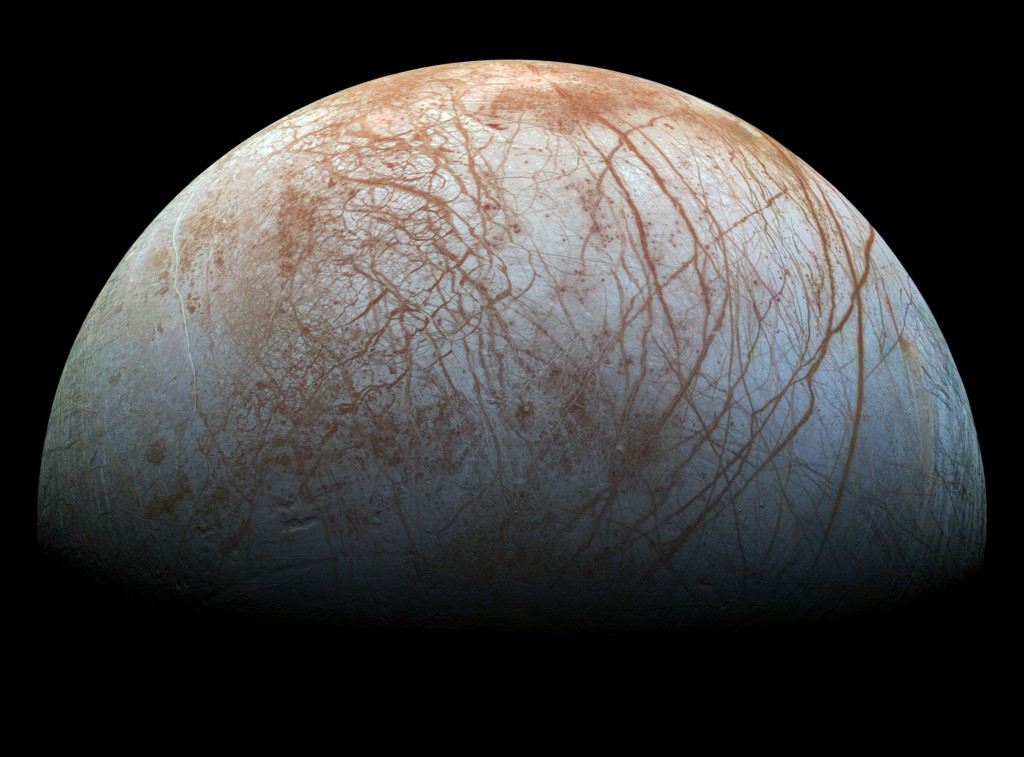
Composite image of the surface of Europa taken by Galileo. NASA
The plumes of Enceladus: Now, here is a moon where the liquid ocean isn’t hiding. The plumes of ice crystals that erupt from geysers on the Saturnian moon’s Southern Hemisphere betray the liquid interior. However, as Ashley Schoenfeld mentioned in her talk here at GSA yesterday, we don’t know too much about how ice tectonics (think of it like Earth’s plates, except made of ice instead of rock), so what drives these geysers on Enceladus isn’t fully understood.
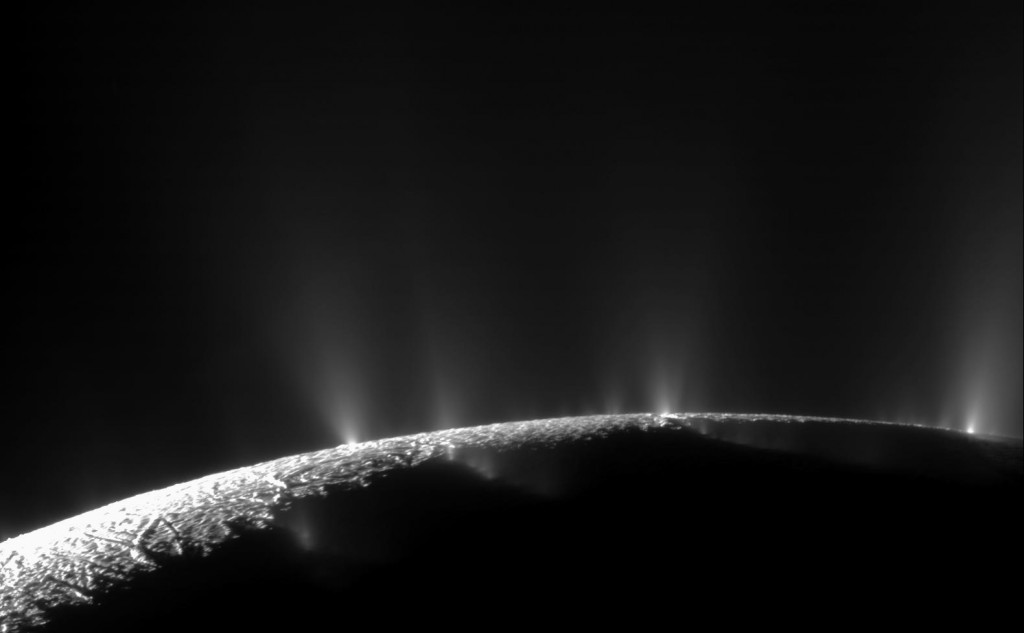
Plumes from the southern polar region of Enceladus, seen by Cassini. NASA
The plains of Pluto: Everyone expected Pluto to be a frozen, mostly inactive looking former planet. However, when New Horizons whizzed past it, instead we saw a startling dynamic dwarf planet. The vast, light-colored plain in the northern hemisphere of Pluto are bizarre and fascinating features that almost seem like a vast ice sheet on this distant object.
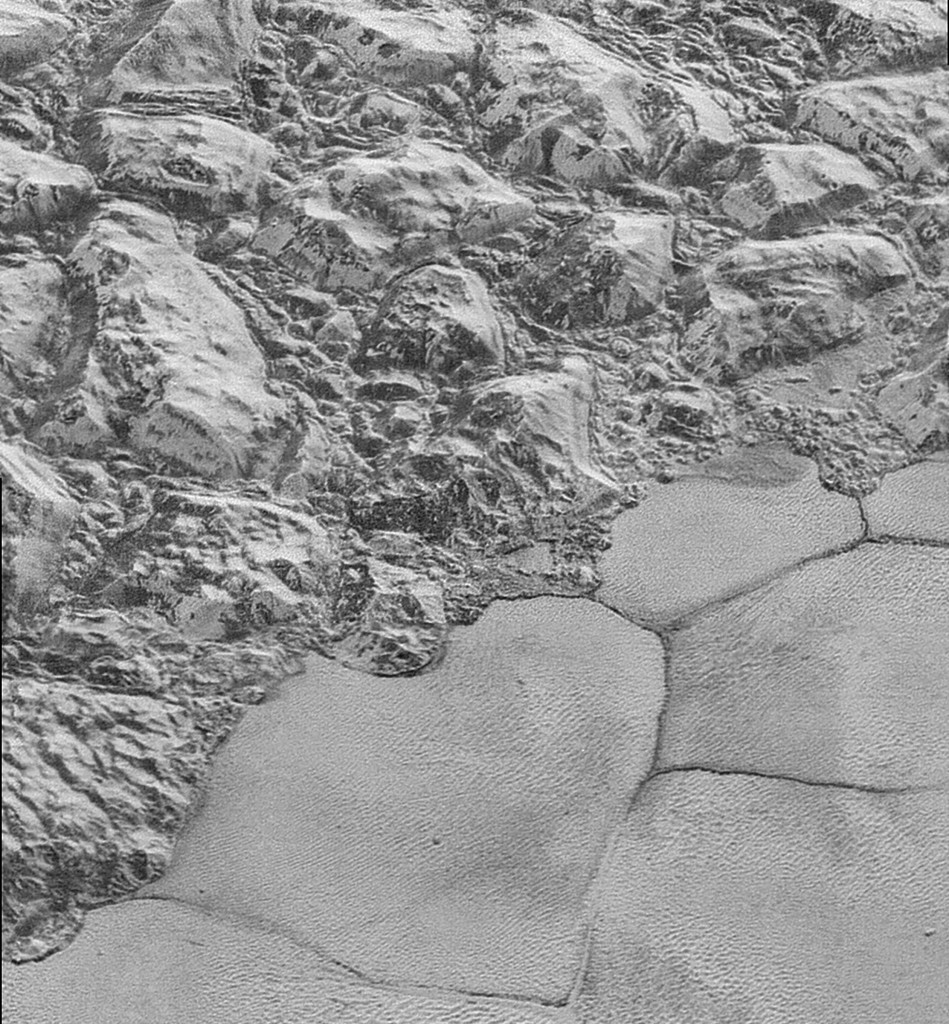
The edges of icy plains where they meet mountains on Pluto, seen by New Horizons. NASA
The volcanoes of Mars: Martian volcanoes are some of the biggest in the solar system. Yet, a talk by Tanya Harrison emphasized the important of small eruptions on Mars for liberating liquid water by heating the rocks near the surface. So, maybe the signs of Martian life should be found near these small volcanoes. Lujendra Ojha talked about the Medusae Fossae formation on Mars, a vast layer of rock that could be the largest explosive eruption deposit in the solar system, dwarfing the largest on Earth by over 100x (hint: it’s the Fish Canyon Tuff).
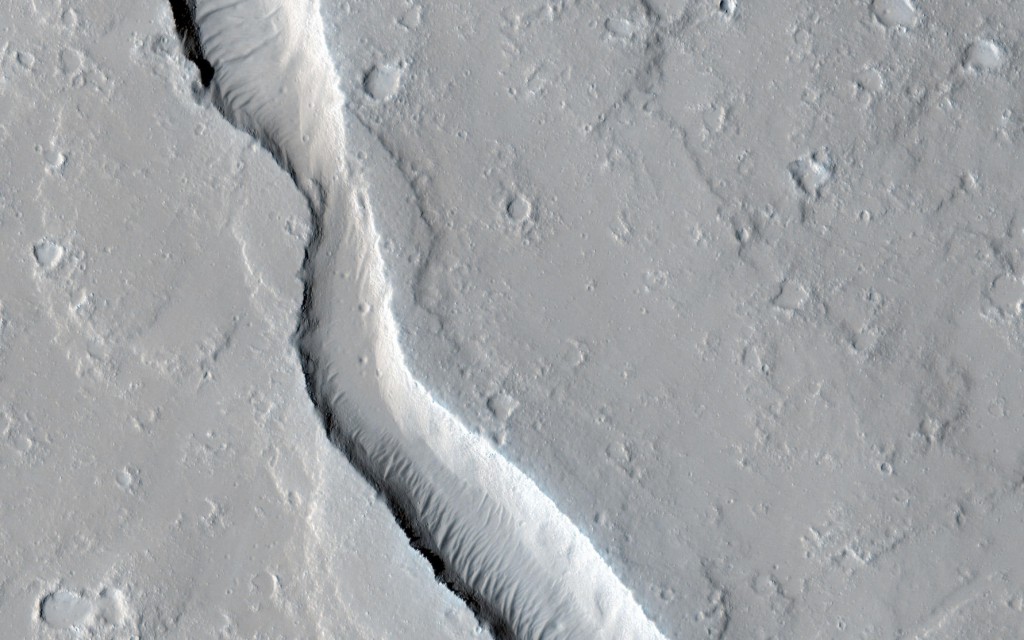
Mars Reconnaissance Orbiter HIRISE image of a collapsed lava tube from Olympus Mons. NASA
The ice mountain of Ceres: On Earth, we get volcanoes of molten rock. However, across the solar system, there seem to be a lot of volcanoes of ice (or ice-like mixtures). On Ceres, it seems that the giant mountain discovered by the Dawn mission may be an intrusive body of ice that deformed the asteroid’s surface. It is one of the most unique and bizarre features in the solar system.
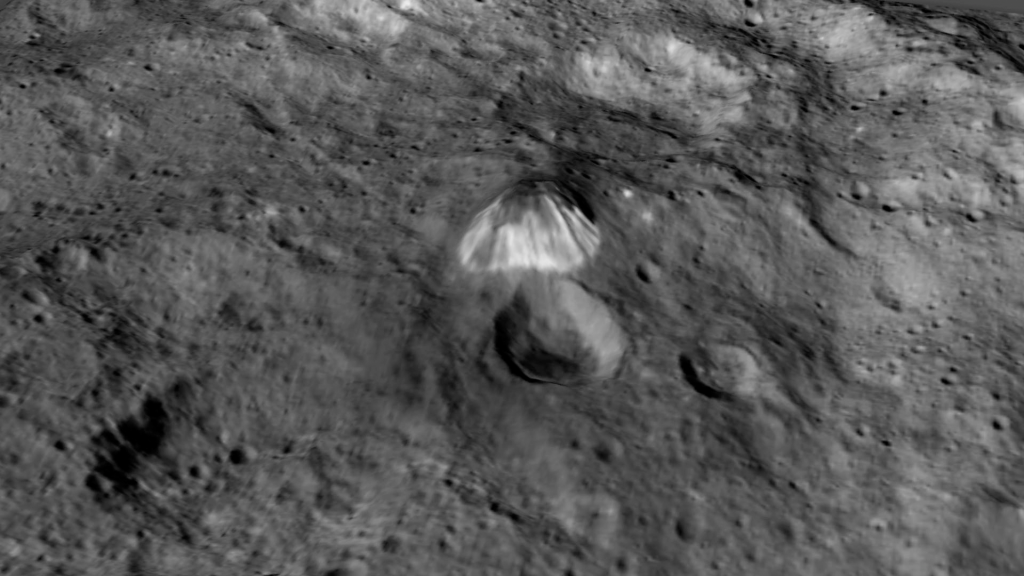
The steep-sized ice mountain on the surface of the asteroid Ceres, seen by the Dawn orbiter. NASA
The (lack of) craters on Venus: Our sister planet is a remarkably smooth object considering it doesn’t appear to have the same tectonics that we find on Earth. Very few impact craters can be seen on Venus’ surface so the debate rages on whether Venus may have catastrophically repaved its surface with lava hundreds of millions of years ago or whether we’ve had a gradual resurfacing. Clusters of volcanic vents (like we see on Earth) suggest it might be more of the latter. Future missions of Venus could solve this problem by mapping its surface in much higher detail (or detecting the signs of current eruptions!)
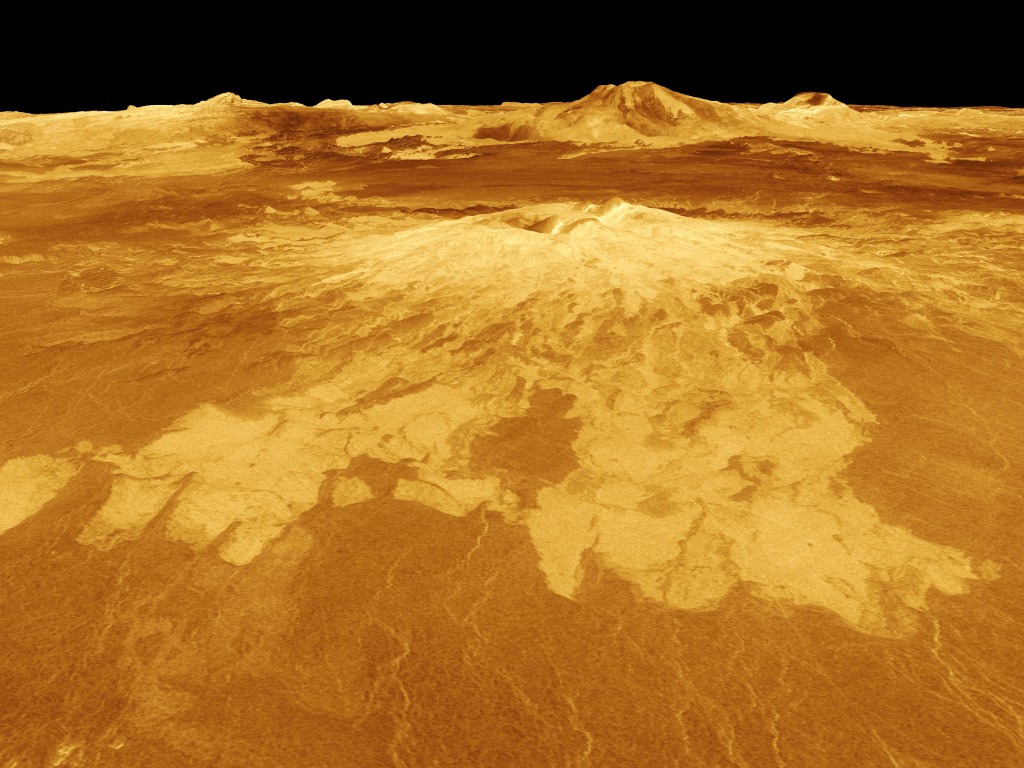
Magellan radar image of Sapas Mons, a volcano on Venus. The lighter colors are younger lava flows. NASA
This does beg the question of what the right word might be for these studies. If you go by the book, geology is defined as the science that deals with the earth’s physical structure and substance, its history, and the processes that act on it. So, all this work looking the rocks and features of other planets might be not be “geology” but something new. Exogeology? Or do we just expand the definition to be any planetary body? It is an exciting time when we can consider what we might consider the field that pulls apart of the features and materials that make up other planets and moons!